Erotic Art in China: 1800-1920
All works featured are from John Byron’s
Portrait of a Chinese Paradise: Erotica and Sexual Customs of the
Late Qing Period
(1987). The pieces contain similar characteristics as well as draw from
the past and foreign influences relevant at the time (Byron, 1987). Late
Qing dynasty erotica uses humor and the political environment and
highlight supposedly suppressed sexuality (Byron, 1987). The
Confucianism which paints China as moralistic, impersonal, and humorless
was pushed by political dynamics and removed the colorful and diverse
nature of the Chinese people (Byron, 1987). Underneath the ‘Confucian
mask’ lies a people invested in sexual pleasure and who’s erotic artwork
lacks sadistic influences and depicts mutually interested participants
(Byron, 1987).
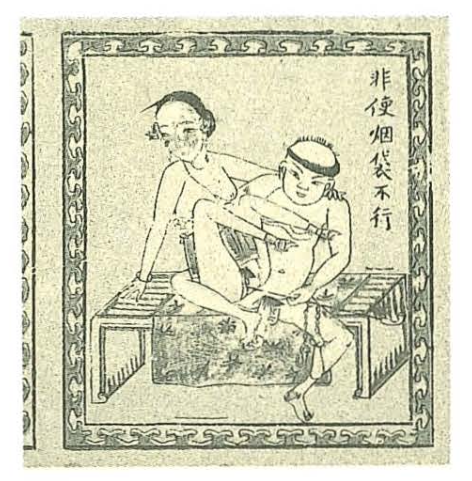
Woodblock print. Late 19th century. Text Reads "It is absolutely
necessary to use the pipe" (p.10)
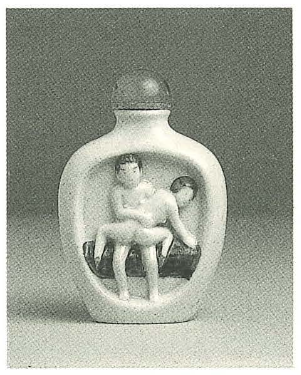
Medicine Bottle. c. 1900. Porcelain with erotic images on both sides
(p.28)
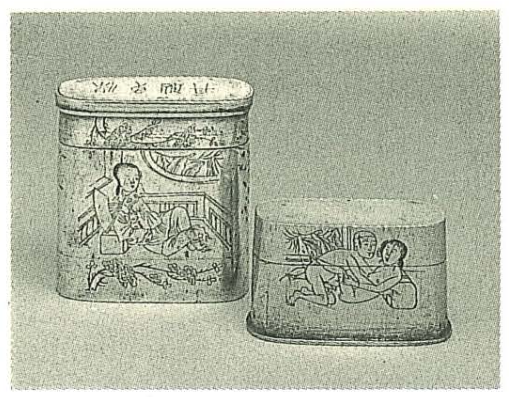
Brass opium container. 19th century. The smaller box fits into the
larger. Text reads "Magical pill for protecting the body" (p.72)
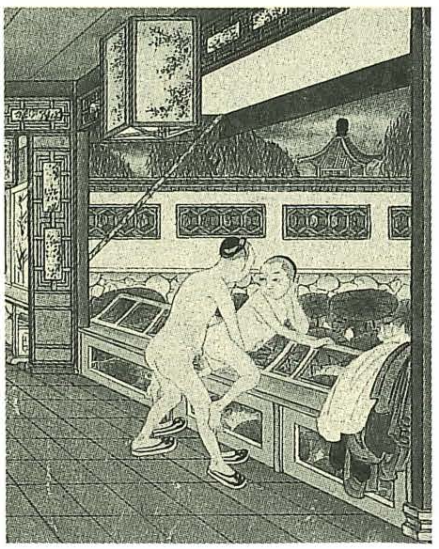
Gouache painting. Early 19th century. Homosexual encounter (p.39)
The rise in popularity of snuff in the 18th century led to the creation
of luxurious bottles and memorabilia (Byron, 1987). This showed up in
the form of erotic snuff bottles and medicine bottles, some of which are
hard to distinguish between due to the mass amounts made and used
(Byron, 1987). Snuff bottles were made for the gentlemen that would
visit brothels and would even match them to their outfits (Byron, 1987).
Homosexual brothels were popular in Beijing and was tied into the opera
culture (Byron, 1987). Homosexuality is found in some erotic pieces and
seems to have been reserved to royalty, wealthy, and theatre acts but
does not seem to have been socially condemned (Byron, 1987).
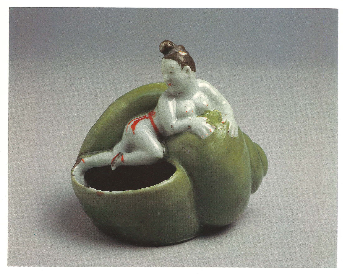
Woman on opium bowl shaped like a shell (p. XX)
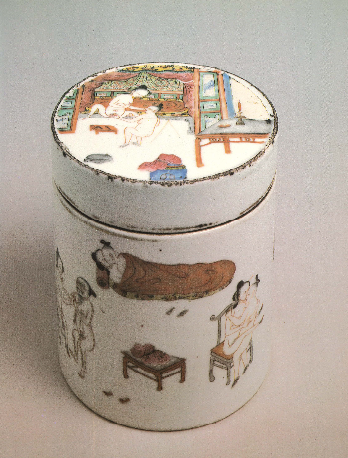
Porcelain opium container. 19th century. Assumed to have been used
in a brothel which provided opium and sex (p.27, IX)
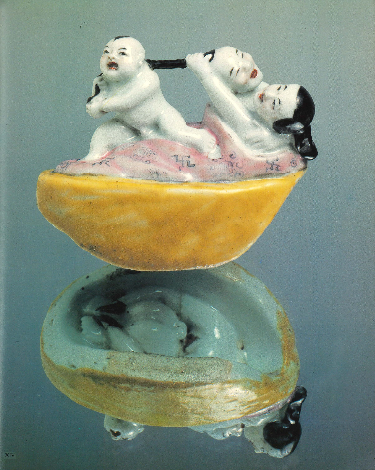
Porcelain. Late 19th century. Representation of an adult with a
child (p.2, XIV)

Cover Photo of porcelain woman







